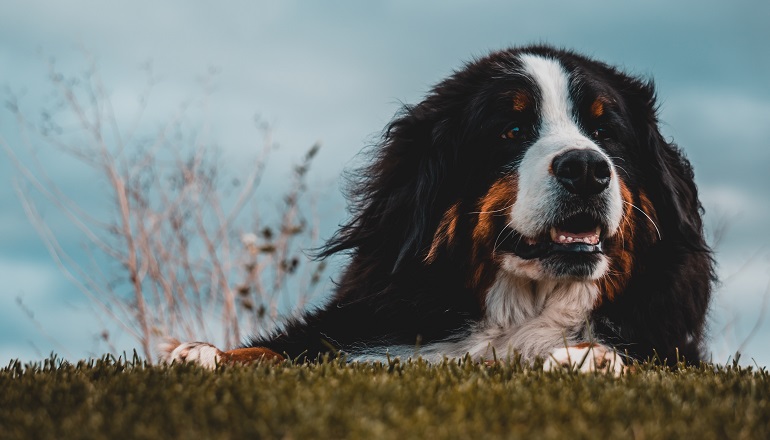My partner and I thought long and hard about whether we wanted to adopt a second child. We thought we might. We also thought about the sleep deprivation we experienced when our daughter, Matta, was an infant, and our comparatively advanced ages. We thought about the risks, challenges, and advantages of trying to adopt an older child. And we came to the conclusion that we were quite happy with our little family the way it was.
Four-year-old Matta had other ideas. One of the worlds most social beings, she was convinced that she needed a sister, someone who would always be available to play with her. So we compromised. After months of research and making contacts and waiting and evaluation of ourselves and our home, there was disappointment and, finally, good luck. We left Matta with her uncle so that we could make the four-hour drive to pick up her new sister—a three-month-old Bernese Mountain Dog puppy we named Coretta.
Certainly, there are disadvantages to having a dog for a sister. Coretta doesn’t talk, and her range of games is limited. On the plus side, she’s a patient, if reluctant, participant in playing dress-up, and is willing to come to any number of tea parties, even if the food is all pretend.
[Instant eBook: How to Raise Adopted Children]
Having a dog for a sister provides many of the opportunities for social negotiation that you expect to have with a sibling—”Do you think Coretta likes it when you do that?” “Coretta gets a choice about whether she wants to stay in your room, just like you get to choose whether you want to keep her out”—without my partner and I having to listen to the bickering that my parents had to put up with. Ta’s natural gift for ordering others around seems more constructive when you call it dog training rather than being bossy. And Coretta takes care of the logical consequences for leaving toys scattered around by chewing up anything left on the floor.
When you get right down to it, some of questions that come up about adoption are easier to discuss when youre talking about a dog. Ta understands that Coretta, like her, has a birth mother who bore her, and that she is now a permanent part of our family. Ta knows that I have met Coretta’s birth mom, as I met hers, that neither are part of our day-to-day lives, but that there is some chance she might meet either birth mom at some point down the road.
Better still, the diversity of color in our family does not strike Matta as odd. MamaLynn and MamaK are white, Ta is brown, Coretta is black and white and brown, Vashti (our other dog) is orange, and Simon the cat is grey. Who says that families are supposed to be all one color? Don’t get me wrong. I do my best to explain what it means to be African-American, but the concepts of ancestors on different continents and slavery and prejudice are slippery things to wrap a four-year-old mind around. The notion that love comes in all colors, shapes, and sizes is not.
[“Second Child, Second Thoughts?”]
In fairness, I must confess that the other day Ta did blurt out: “I want a person sister!” There it is. Parents are mean and impose unjust limitations that they claim are for the good of the whole. Which is just as well, since Ta also recently declared: “We should have three more dogs!”
Ah, well. In the meantime she has someone who is always there for her—someone endlessly patient, cheerful, friendly, and well intentioned. If we knew where to find a child like that, maybe we’d have another.



